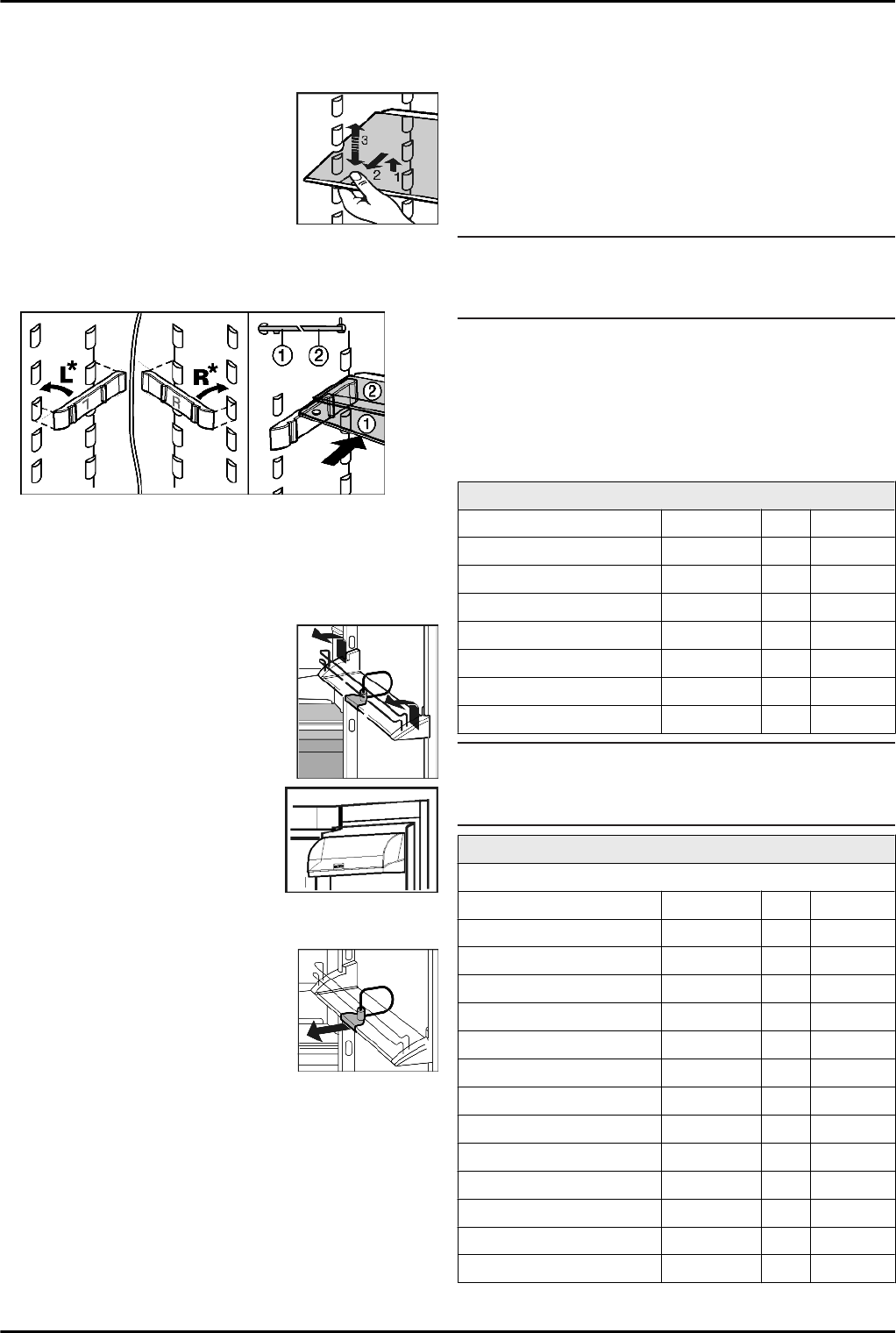
5.6.4 Relocating the shelves
The shelves have stops preventing them from being unintention-
ally pulled out.
u
Insert shelf with the raised edge pointing upwards at the back.
w
The food does not freeze onto the rear wall.
5.6.5 Using the sectioned shelf
Fig. 27
u
Attach the support rails, paying attention to the right (R) and
left (L) part!
u
The glass shelf with stop face (2) has to be at the back.
5.6.6 Moving the storage rack
Always remove the butter and cheese
compartment together with the lid.
u
To remove lid: Press one side part of
the butter and cheese compartment
outwards until the lid pin is clear and
then remove the lid sideways.
5.6.7 Removing the bottle holder
u
Always take hold of the bottle holder on
the plastic part.
5.7 BioFresh compartment
The BioFresh compartment allows some types of fresh food to
be stored up to three times longer than in conventional refriger-
ators, without compromising quality.
For food with an indicated best before date, the date specified
on the packaging always applies.
5.7.1 HydroSafe
The HydroSafe at the moist setting is suited for storing unwrap-
ped salad, vegetables and fruit with high inherent moisture.
When the drawer is well filled, a dewy climate with up to 90%
humidity is established. The humidity in the compartment de-
pends on the moisture content of the food stored and on the
opening frequency. You can set the humidity yourself.
5.7.2 DrySafe
The DrySafe is suitable for storing dry or wrapped food (e.g. dairy
products, meat, fish, sausages). A relatively dry storage climate
is established here.
5.7.3 Storing food
Note
u
Vegetables sensitive to cold, such as cucumbers, aubergines,
semi-ripe tomatoes, zucchinis and all tropical fruits sensitive
to cold, do not belong in the BioFresh compartment.
u
To prevent food spoilage due to transfer of germs: Store un-
wrapped animal and vegetable products separate from one
another in the drawers. This also applies to different sorts of
meat.
If food has to be stored together due to lack of space:
u
wrap the food.
5.7.4 Storage times
Standard values for storage time at low humidity
Butter up to 90 days
Hard cheese up to 110 days
Milk up to 12 days
Sausage, cold meat up to 9 days
Poultry up to 6 days
Pork up to 7 days
Beef up to 7 days
Game up to 7 days
Note
u
Please note that protein-rich food deteriorates faster, i.e.
shellfish and crustaceans deteriorate faster than fish, fish fast-
er than meat.
Standard values for storage time at high humidity
Vegetables, salad
Artichokes up to 14 days
Celery up to 28 days
Cauliflower up to 21 days
Broccoli up to 13 days
Chicory up to 27 days
Lamb's lettuce up to 19 days
Peas up to 14 days
Kale up to 14 days
Carrots up to 80 days
Garlic up to 160 days
Kohlrabi up to 55 days
Lettuce up to 13 days
Herbs up to 13 days
Leek up to 29 days
Control
12


















